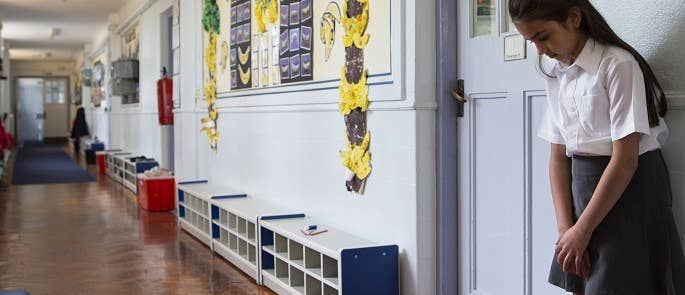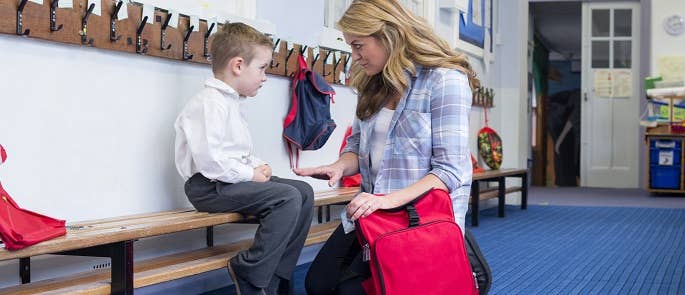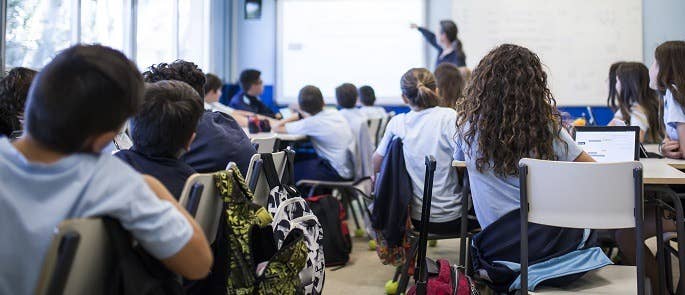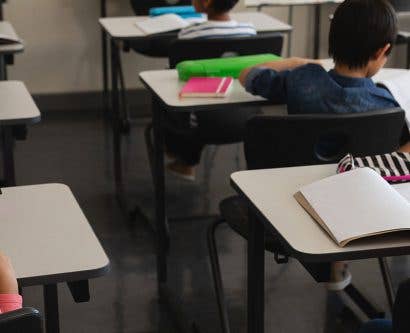How to Set Behaviour Expectations in the Classroom
Behaviour is a major challenge faced in schools by ECTs, experienced teachers, and other school staff. However, this challenge can be overcome using both proactive and reactive strategies, to reduce the likelihood of the behaviour occurring in the first place, and to respond to it effectively when it does occur. In this article, we will focus on a proactive strategy: setting behaviour expectations in the classroom.
We will outline what is meant by behaviour expectations, explain their importance, and provide you with tips and advice as to how you can set behaviour expectations in your classroom.

What Are Classroom Behaviour Expectations?
Behaviour expectations are tools that encourage positive behaviour – they are standards of conduct which might take the form of ‘dos and don’ts’ or procedures to follow in certain situations. For example, you might have an expectation that students always try their best, or you might expect them to be on time, or to line up outside in single file when they arrive at your classroom. Other examples of behaviour expectations might centre around routines for answering a question in class, transitioning between activities, or going for a toilet break.
It’s important to set out your behaviour expectations at the beginning of the year – and reinforce them regularly afterwards – because all students have different backgrounds and experiences. You cannot assume that they know what you mean by ‘good behaviour’, or that they have the good habits ingrained to be able to behave positively. By teaching them exactly what you would like them to do, you can make it clear to students what they need to do in order to be successful. This reduces the time you spend addressing behaviour during lessons.

Additionally, research has found that having clear, consistent, high expectations in the classroom can positively affect students’ abilities, opportunities to learn, motivation, and learning outcomes. If you set out expectations, they are likely to meet them.
Other advantages of behaviour expectations include:
- Giving students a sense of confidence, safety, and security – they consistently know what they’re supposed to do.
- Decreasing stress in the classroom, and making it a more positive environment.
- Giving students the ability to take responsibility for their behaviour and learn to self-regulate.
Need Challenging Behaviour Training?
Our Challenging Behaviour training course is recommended for professionals who want to have a better understanding of how to respond to the behaviour of the children and young people that they work with. It emphasises proactive strategies to prevent behaviour incidents, as well as going through research-based reactive strategies (including reacting to extreme behaviour) and putting support in place after behaviour incidents. Visit our course library to have a look at this and our other available training courses.
Why Might Children Misbehave?
There are many different potential causes and functions of behaviour that challenges in the classroom.
Functions of Behaviour
Functions of challenging behaviour might be:
- Acquiring social attention – even if this attention is negative, such as shouting, it can be motivating for some children, especially if they feel that this is the only attention they will receive. The behaviour may be a cry for help.
- Getting something tangible – a certain sort of behaviour might get the child what they want, such as food or an object.
- Escaping – challenging behaviour may help them to avoid things, such as the dentist or a certain lesson that they find difficult. If they are afraid of failing at a task in the classroom, they might leave the room or avoid it by ‘misbehaving’.
- Getting sensory feedback – sometimes, children might be pursuing the feeling that certain behaviours give them. For example, rocking, humming, or self-harming might fulfil their need for sensory feedback.
- Enjoying themselves – children might simply dislike a lesson or being at school, and prefer to chat or entertain themselves.
However, the behaviour often – though not always – has an underlying cause beneath the function.

Causes of Behaviour
Causes of behaviour might include:
- Mental and physical health – When children are in pain or have a health problem, it can hugely impact their behaviour. Mental health problems, including stress and anxiety, are particularly prevalent; according to YoungMinds (2019/20), five children in every classroom have a diagnosable mental health problem.
- Family – Within the home environment, children and young people can be exposed to many stresses that will affect their everyday life, including divorce or domestic abuse. They will also build up positive and negative behaviours at home that they carry over to school.
- Neglect and abuse – The persistent failure to meet a child’s basic physical and/or psychological needs is likely to result in the serious impairment of the child’s health or development. This, in combination with low self-esteem, can lead to challenging behaviour.
- Trauma – Experiences such as bereavement in the family, serious injury, sexual violation, or natural disasters can lead to changes in behaviour.
- SEND – This can affect behaviour in many ways; if children have conditions that impact their ability to communicate and interact (e.g. autism, or speech and language problems), they may become frustrated and use challenging behaviour to express this. Certain conditions, such as ADHD, might mean that a child’s behaviour is neurologically programmed – they can’t help but behave in that manner.
- Peer pressure and bullying – Young people are often under pressure to behave negatively to fit in or live up to a certain profile. Additionally, those who are bullied are more likely to display challenging or criminal behaviour, and develop attendance issues.
Setting behaviour expectations in the classroom can reduce the likelihood of this sort of behaviour occurring, but if it does still occur, have a look at our article on dealing with challenging behaviour here.

How Can Teachers Set Behavioural Expectations of Students?
Behaviour expectations should be set at the beginning of a school year, but you will probably need to review them every term (or more, especially at the start of a year!). This helps to refresh your class’s memory of what they need to do and why it’s important. You could set aside five minutes every now and then to go over the expectations, ensuring that you never let them slip.
Your expectations will be most effective if they are consistent with expectations across the school. If your school already has preferred ways for students to behave, follow their lead – coming up with something different could be confusing and devalue the importance of the expectations. Check your school’s behaviour policy first.
Try to keep your list of expectations as short as possible – ideally no more than five. Limit them to the key behaviours that are required in order for your classroom to function effectively. You could display the expectations visually, on posters inside the classroom, as a constant reminder.
Teaching Behaviour Expectations
When talking about your expectations, be specific – it’s not enough to simply say ‘be on time’ or ‘come prepared’. You need to explain what this means to you so that students have the greatest chance possible of getting it right. Is being on time within one minute of the bell? Is being prepared having paper, pens, and books with them? If so, say that.
You’ll need to teach your behaviour expectations in the classroom the way you’d teach any other topic in school. Talk about the detail – what they are, why they’re important, the consequences of breaking them, and any exceptions to them – and give your class a chance to practise. Below, we’ll give you an example of how to teach expectations effectively.

Example
- Identify the expectation – ‘Listen when others are talking.’
- Identify why it’s important – ‘It is important to listen when others are talking so that they feel respected and have a chance to share their thoughts and opinions. We all want and need to be able to do that.’
- Decide what the expectation does and doesn’t look like – ‘Listening to others means looking at them, not talking when they are, and putting your hand up if you want to talk during the lesson.’ For younger students, you could draw pictures of the appropriate behaviour.
- Practise the behaviour – Do a few practice runs where you show students what to do and what not to do. Ask students to explain why it is the right/wrong thing to do, and demonstrate how to do it themselves. Give them lots of positive reinforcement.
- Respond consistently – Once you’ve set the expectations, you should always respond consistently. Reinforce children who are doing it right, and give feedback and opportunities to correct the behaviour for those who are doing it wrong (e.g. ‘Sam, we listen to others in this classroom – show me how you do that, thank you’).
Tips for Behaviour Management in Schools
In this section, we have put together six tips for setting behaviour expectations in the classroom, summarising what we’ve talked about in this article.
- Define behaviour expectations as specifically as possible, so that students know exactly what they’re meant to do. Expectations should be framed positively (e.g. ‘Listen when others are talking’ rather than ‘Don’t interrupt’). After defining them, demonstrate and practise each expectation again and again throughout the year.
- Build effective learning relationships with students, so that they’re more likely to cooperate with you in the classroom. Take time to understand how they learn and think, and share a little of yourself.
- Be prepared for lessons, knowing what you’re going to do at each stage and what your learning objectives are. If you’ve planned enough work, got enough resources, and decided how to transition between activities, you can reduce the opportunities for behaviour that challenges. It also helps to practise key phrases to use if a student does display challenging behaviour.
- Be consistent, rewarding students when they follow the expectations, and establishing consequences when they don’t. Only make exceptions when the circumstances really are exceptional – you should already have explained to the class when this might be.
- Communicate your expectations to parents or carers, as well as students. It helps if those at home support the behaviour expectations you have at school. You might give parents/carers your behaviour policy to see and sign, or post the expectations on the school website. When there are behaviour issues, ensure you use effective communication skills so that parents do not feel confused or defensive. Find out more in our article ‘Effective Communication in the Classroom: Skills for Teachers’.
- Review your expectations at the end of the year. It’s important to keep your teaching practice dynamic – have your expectations been effective? Have you achieved what you wanted to achieve? What might you change next year? You could get your class involved in these discussions, asking them what they think is important for the classroom to function.
Further Resources:
- Challenging Behaviour Training Course
- How to Deal with Challenging Behaviour in the Classroom
- ABC Chart for Challenging Behaviour: Free Template
- Conflict in the Classroom: Coaching Children in Acting Responsibly
- How to Create a Behaviour Support Plan: Free Template
- How to Create a Positive Learning Environment











